What are the features that make the best monitor for flight simulator programs like MS Flight Simulator? It starts with great visual quality and plenty of screen resolution—for a more immersive experience with today’s flight simulators, at least 1080p is a must, and 4k resolution is preferable. Compare 1080p vs 4K computer monitors to see the differences.
Next, the best monitors for flight simulators should have a great ergonomic design. Whether you’re looking at a standard flat screen, curved monitor, or ultrawide monitor, they should support a comfortable viewing angle and give you plenty of screen real estate to play with.
Finally, a great display for immersive flight simulation games should have a fast enough refresh rate to deliver smooth motion. Most gamers prefer at least 75Hz, along with the ability to sync with a high-end PC graphics card and provide variable refresh rates.
If you’re in the market for a top-rated monitor for flight simulation games, keep reading this buying guide to learn more.
Top Monitors for Flight Simulator
#1 Samsung LC49RG90SSNXZA 49-inch Curved Gaming Monitor
Award: TOP PICK
WHY WE LIKE IT: It offers a wide field of view thanks to its large screen size and gets very bright for problem-free viewing. It has a rapid response time and is curved to deliver an immersive game experience. Could it be a top monitor for PS5, too?
- Massive screen real estate
- Rich color
- Very bright
- Limited port selection
Gamers who would appreciate a wide field of view will be very impressed with what the Samsung CRG9 has to offer. Categorized as an ultra ultra-wide display, the 49-inch display provides plenty of screen real estate, and since it is curved, Flight Simulator players will also be able to enjoy an immersive gaming experience. Specs-wise, the monitor also packs a serious punch, with a peak brightness level of 1000 nits and a rapid 4ms response time to keep motion blur at bay. It also has a 120Hz refresh rate to keep things buttery smooth and a DisplayHDR 1000 certification for ultra-realistic image rendering. However, its port selection is a bit limited for a monitor of its stature, with only one HDMI 2.0 port, two DisplayPorts, and no USB port.
This monitor supports up to 1.07 billion colors, so players can be assured of rich and accurate color reproduction, and with support for FreeSync technology, the monitor is easily able to match its frame rate with that of a connected GPU to prevent any instances of screen stuttering. The display is also Flicker Free to prevent any eye irritation, and it handles reflections pretty well thanks to its matte anti-reflective coating.
#2 Asus ROG Strix XG32VQ QHD Curved Gaming Monitor
Award: HONORABLE MENTION
WHY WE LIKE IT: It is highly adjustable thanks to its ergonomic stand and has a rapid 4ms response time to prevent any motion blur. It also has wide viewing angles and comes with RGB lighting for the perfect game experience.
- Great ergonomics
- VESA mount compatible
- Narrow bezels for a multi-display set up
- No built in speakers
The Asus ROG XG32VQ is classified as a 32-inch display with a game-worthy 144Hz refresh rate and a decent 1440p screen resolution for good enough picture clarity. The display has a 1800R curvature for an all-around field of view which Flight Simulator players will largely appreciate, and its stand is height, tilt and swivel adjustable for accurate positioning. Aside from its impressive ergonomics, this display is also optimized for fast action gaming thanks to a 4ms response time that leaves no motion blur behind, and with support for FreeSync technology, there won’t be any gamers complaining about screen tearing or stutter. Unfortunately, it does not have any built-in speakers.
The display also comes with Flicker-Free technology and a blue light filter to minimize any instances of eye strain, and on its rear, it features Aura Sync RGB lighting to create the perfect gaming atmosphere. The monitor also offers wide viewing angles that make it an ideal choice for multiplayer gaming and can also be VESA mounted for users who are not too enthusiastic about using it as a desktop. It has a decent brightness level of 300 nits and has a narrow bezel design that is ideal for a multi-display setup.
#3 LG 34GP83A-B 34-inch UltraGear Curved Gaming Monitor
Award: BEST FOR SUPER SMOOTH GAMEPLAY
WHY WE LIKE IT: It has a very high refresh rate, which makes for an excellent PUBG monitor, and variable refresh rate technology that keeps images super smooth when playing games. It also supports HDR content and has a wide color gamut.
- Impressive 160 Hz refresh rate for smooth games
- Rapid 1ms response time to eliminate motion blur
- Support for HDR content
- Takes a long while to wake up from sleep
The LG 34GP83A-B is another ultra-wide alternative that Flight Simulator players who prioritize having a wide field of view should highly consider. It also has a quick 1ms response time that eliminates any motion blur and an impressive 98% coverage of the DCI-P3 color gamut for accurate color reproduction. Its DisplayHDR 400 standard means that its colors are well balanced and saturated, and since its refresh rate can be overclocked to 160Hz, images appear super smooth even in fast action scenes. Unfortunately, previous users have complained that it takes quite a long while to wake up from sleep.
With support for AMD FreeSync premium technology and Nvidia G-Sync compatibility, this monitor will work very well with GPUs or consoles that use either AMD Radeon or Nvidia graphic cards. This means that users won’t experience any instances of screen tearing or stutter regardless of whichever console they connect to the monitor. Its support for Dynamic Action Sync technology means gamers will have the chance to respond super quickly when gaming thanks to its reduced input lag, and visibility, especially in dark scenes, will be significantly improved once its Black Stabilizer is turned on.
#4 MSI Optix G24C 24-inch Full HD Curved Gaming Monitor
Award: BEST FOR HIGH CONTRAST
WHY WE LIKE IT: It has an excellent contrast ratio for well-balanced blacks and whites, and its screen is curved for an immersive gamer experience. It also has wide viewing angles and eye care technology to facilitate marathon game sessions.
- Great contrast ratio
- Wide viewing angles
- Narrow bezels for a multi display setup
- No support for HDR content
At 24-inches, the MSI Optix G24C might be small, but it also comes with all the right features that would make playing games like Flight Simulator on it a delightful experience. Its 24-inch screen is curved for more immersive gameplay, and its 1080p Full HD screen resolution provides good enough picture clarity. It has an impressive 144Hz refresh rate to keep transitions smooth and seamless, and has wide 178° viewing angles that make it great for multiplayer gaming. Its ultra-narrow bezels are great for a multi-display setup, but its lack of support for HDR content may turn some away.
This monitor also comes with both Anti-Flickering and blue light filter technology to reduce any instances of eye strain, especially among players who enjoy long marathon sessions, and since it also comes with AMD FreeSync technology, it can match its frame rate to that of a connected GPU to eliminate screen stutter. The display has excellent contrast thanks to a 3695:1 contrast ratio, and it also features a specialized MSI gaming center that lets gamers choose between seven different visual modes to enhance their gaming experience.
#5 Alienware AW3821DW 38-inch Curved Gaming Monitor
Award: BEST FOR COMPETITIVE GAMES
WHY WE LIKE IT: It is ideal for competitive games since it has a super low 4ms input lag, and with a high 144Hz refresh rate, there won’t be any screen stutter or image tearing.
- Great for competitive gamers
- High 144Hz refresh rate
- Low input lag for quick responsiveness
- Poor black uniformity
The Alienware AW3821DW gaming monitor is a curved 38-inch display that is DisplayHDR 600 certified to deliver super realistic images and has a deep 2300R curvature for a wide field of view. The monitor’s WQHD screen resolution makes for super clear image clarity, and with a 144Hz refresh rate, its transitions are super smooth and stutter-free. To do away with motion blur, the display has a 1ms response time and being the only 38-inch monitor in Dell’s Alienware line-up, it is an ideal option for Flight Simulator gamers who need a monitor that is big but not too big. Unfortunately, its black uniformity is not the best.
This 38-inch display also has wide viewing angles and a low input lag for lag-free gaming. It has an excellent build quality and a decent brightness rating of 450 nits on SDR mode that shoots up to 600 nits when switched to HDR. As far as ports are concerned, the display has one DisplayPort 1.4, two HDMI 2.0 ports, and five USB ports. It also has a 4ms input lag for super quick responsiveness and preventing any lag in command execution when gaming.
#6 Sceptre C345B-QUN168W 34-inch QHD Curved Gaming Monitor
Award: BEST FOR WIDE PORT SELECTION
WHY WE LIKE IT: It has a wide range of ports and supports the HDR1000 standard that makes its colors brighter and a wide port selection for flexible connectivity. It also has impressive ergonomics and a 1ms response time to do away with motion blur.
- Great ergonomics
- Wide port selection
- Rapid response time
- No support for variable refresh rate technology
This 34-inch Sceptre display is a curved monitor with an impressive 165Hz refresh rate to avoid screen tearing, and since it has been certified with the HDR1000 standard, it can illuminate colors up to 50% brighter than SDR. The display also comes with an ambient light sensor that adjusts screen brightness according to environmental conditions and a rich port selection that includes three HDMI ports, one DisplayPort, and a USB Type C port. Sadly, it has no support for variable refresh rate technology.
This display is also capable of exceptional color thanks to its 99% coverage of the sRGB color scale, and with a rapid 1ms response time, it entirely does away with motion blur. It is a VESA wall mount compatible with easy wall mounting and also has a colorful LED light that illuminates the back cover to create the perfect gaming atmosphere. It also has great ergonomics since it is height, tilt, and swivel adjustable.
Beginners’ Guides to Monitors for Flight Simulators
What are Monitors for Flight Simulators?
In a basic sense, monitors for flight simulators are gaming displays set up to provide a realistic flight simulation experience. They can either use a standard screen size and 16:9 aspect ratio, or they can be ultrawide displays with a 21:9 aspect ratio, allowing more screen space for a panoramic view.
Monitors for Flight Simulators vs Other Gaming Monitors
On a basic level, monitors for flight simulation are similar to other gaming monitors and high-end PC monitors. They receive signals from a PC or console and translate those signals into a moving image on a screen.
However, compared to other gaming monitors, the best display options for realistic flight simulator games have some unique requirements. Whereas typical gaming monitors use flat 16:9 screens and prioritize fast response time, monitors for flight sim games may use curved screens or ultrawide display screens and tend to prioritize image quality.
As with other gaming monitors, the best flight simulation screens should have a refresh rate that exceeds the frame rate of the media they display. 120Hz is generally considered a good refresh rate for flight simulators. This allows you to play flight simulation games at up to 120 frames per second for smooth motion.
Ultrawide monitors and curved monitors play a more significant role in flight simulators than in other types of gaming. While FPS gamers often prefer a flat single-monitor setup, flight sim enthusiasts may want a curved monitor or an ultrawide display.
For any display setup for flight simulators, monitor size and viewing angle are crucial. Generally, you’ll want a larger screen than with other kinds of gaming, with most flight simulation experts recommending at least a 27-inch monitor. Display resolution is important too, as is color reproduction and a wide color gamut.
How Monitors for Flight Simulation Work
Like most of today’s gaming displays and monitors for high-end PCs, the best monitors for flight sim games usually use either IPS panel LCD screens or OLED screens. Each panel type has its pros and cons, but both can work well, maintaining rich colors and a high dynamic range across wide viewing angles.
OLED monitors tend to have a higher contrast ratio, darker blacks, and a higher native resolution, whereas IPS panel monitors have a more affordable price and offer a wider range of screen size and aspect ratio options. Both types, though, provide solid gaming performance.
For a more immersive experience with flight games, many people choose widescreen monitors and curved monitors. or a multi-monitor setup. This does a better job of simulating the cockpit instrumentation and windows of an airplane and helps train you to use peripheral vision.
Some gamers utilize a dual or triple-monitor setup for flight simulation. When done well, this allows for the optimum mix of fast response time and sharp visuals, with each monitor placed to provide the ideal viewing angle. Multiple-monitor systems can be tricky to set up properly, however, and may not be compatible with all flight simulator games on PC and consoles.
Monitors for games like Microsoft Flight Simulator typically interface with a PC using DisplayPort or HDMI cables. When connecting over HDMI 2.0 or HDMI 2.1, many monitors can work with graphics cards to synchronize and optimize frame rates for action sequences.
Why Should You Buy a New Monitor for Flight Simulations?
A newer standard or wide-aspect ratio monitor can work with today’s sophisticated graphics cards to deliver a more immersive flying experience and realistic flight simulations. A good monitor can boost your flight sim experience by allowing you to run the newest simulator programs at their highest resolution settings.
You might want a new monitor for flight simulations to experience more realistic flying and help yourself prepare or train for actual flying lessons. Or, you might have just upgraded your gaming console, PC, or graphics card. To take advantage of the boost in rendering performance from the latest chips, you might need a higher-resolution or higher refresh rate monitor.
In terms of performance, the latest displays have reduced input lag, with a 4ms response time or less now common even on curved screens. They also have higher refresh rates, which allows for playing at higher frame rates and smoother, more realistic flying action. If you’ve upgraded your hardware or are looking for the most immersive and realistic flight simulators experience you can have at home, it might be worth investing in the newest monitor technology.
Is a Monitor for Flight Simulators Worth Buying?
Updated Video Card: To make full use of a new, upgraded video card you’ll want a monitor capable of displaying the graphics card’s full capability. Features like G-Sync variable frame rate, motion blur reduction technology, and real-time ray tracing can make for more realistic visual quality, but you’ll need the right monitor.
Trying Out a Curved Gaming Monitor or Widescreen Setup: If you normally use a smaller flat panel monitor as your gaming display but are getting more into flight simulator games or want to get more serious about your flight sim setup, you may want to try a larger curved gaming monitor or a curved ultrawide monitor. While these options do take up some desk space and have drawbacks for other video game genres, they are an excellent choice for flight simulator games.
Like a dual monitor setup, ultrawide monitors for flight simulation provide a more realistic sense of being in a plane, better simulating a panoramic view and allowing more screen space for displaying cockpit instrumentation. A curved ultrawide IPS monitor will usually perform better at a wide viewing angle, suffering less chromatic shift than any flat LCD panel monitor of a similar size. That said, you’ll want to compare two monitors vs an ultrawide monitor for your setup.
Considering a Multi-Monitor Setup: If you’re thinking of using additional displays to boost your gaming experience on flight simulator games, not just any type of monitor will do the job. You’ll want to make sure your primary monitor and additional side monitors have the right connectivity features, whether this means HDMI 2.0 or 2.1, downstream USB ports, or DisplayPort connections.
When changing to a dual monitor setup you may want to upgrade the display performance and visual quality while you’re at it.
Improved Gaming Performance: Especially important for fast-paced games, display refresh rate and response time are crucial if you want the best monitor for flight simulation. Now that many of these programs can run at 60 or 120 fps, you’ll more likely notice the difference between a refresh rate of 60Hz and 120Hz or 144Hz. Even a 75Hz monitor will be a worthwhile improvement over standard 48Hz and 60Hz displays when it comes to flight simulator games.
Why a Monitor for Flight Simulator Might not Be for You:
Lack of Desk Space: You may wonder if it’s worth it to upgrade your display if you don’t want to take up too much desk or wall space. But you don’t have to go for a giant, 49-inch ultrawide monitor to enjoy the upgraded performance for more realistic flight sims. Many consider 24-inch and 27-inch monitors to be the sweet spot for PC gaming, in general. A 27-inch 4K monitor or a 24-inch curved monitor can be an excellent choice for flight simulators. Newer displays may also come with a height adjustment feature or an adjustable monitor arm, leaving plenty of space clear for papers and storage.
Concerns about Eye Strain: If you’re hesitant about larger and brighter displays due to concern about eye fatigue, you might want to consider a newer monitor with built-in eye care features and auto-brightness. These features can reduce the blue and near-UV exposure from the screen, while still giving you a wider field of vision and superior contrast for gaming applications.
You Also Use Your Monitor for Streaming Media or FPS Games: Many FPS gamers do prefer a flat monitor, so needing a multi-purpose monitor may mean you don’t want to exclusively shop for a curved gaming display with flight simulator use in mind; however, several options make excellent displays for flight simulator games while still providing great performance on fast-paced action games. Plus, it’s helpful to know the differences between a curved vs flat monitor for gaming.
How Long Will a Monitor for Flight Simulators Last?
Like most computer and console displays, monitors designed for flight simulation games will typically last anywhere from three to five years, depending mostly on how soon a user decides to replace them. In theory, LCD monitors, such as the common IPS panel type, have a service lifespan of about 50,000 hours—this is how long the backlight bulb typically lasts. Older CRT monitors are rated for about 20,000 hours. But, which one is better for gaming; CRT vs LCD?
In real life, however, most display devices are retired due to obsolescence long before they stop working. To maximize the life cycle of your display, you can use the screen saver function whenever possible, set auto-brightness to account for ambient light, and protect the display from extreme temperatures.
Another way to boost your monitor’s useful life is to invest in some “future-proofing” features, choosing a display with lots of connectivity options including the latest HDMI 2.0 and 2.1 ports, a high enough refresh rate to support the fastest graphics cards on the market, and plenty of resolution.
How to Choose a Monitor for Flight Simulators
When it comes to realistic flight sim displays, experts generally recommend a monitor with a wide aspect ratio and the highest native resolution you can find at an affordable price. Ideally, you’ll also want a monitor with great dynamic range and excellent performance. A 1-ms response time is best, and a refresh rate of at least 75 Hz helps make for smoother and more responsive gaming. Wide viewing angles and superb detail sharpness are a must for flight simulator games. Several key factors may help decide which is the best flight simulator game display option for you. Keep reading to learn more about these and how to choose the best Flight Simulation display for your needs.
Monitor for Flight Simulator Key Factors
1. Single, dual or triple monitor setup?
Depending on whether you want to use a single monitor or multi-monitor setup, there may be differing requirements for each display device. When it comes to single screen setups, for example, a larger screen with higher resolution and better corner sharpness is more important.
For a great single monitor choice for flight simulators, you may want to look at an ultrawide 4K or QHD monitor, or a curved ultrawide gaming monitor. For use as part of a multi-monitor system, on the other hand, connectivity features and performance take precedence. You’ll want to make sure to look for downstream USB ports or the right type of HDMI ports.
2. Do you use the display for other types of gaming?
Because flight simulators represent an extreme use case for monitors, in general, the best setup for you may be different if you’re also looking for a great all-around gaming monitor and PC display. A 75Hz refresh rate is adequate for most flight sim programs, but if you also play fast-paced games such as Call of Duty, you might prefer a faster refresh rate of 120Hz or more. Conversely, a widescreen works best for flight simulation games, but an ultrawide gaming monitor might be too wide for console games and programs that lack 21:9 aspect ratio support.
3. Do you use a separate sound system?
Does the sound quality of a display’s integrated speakers matter to you? If so, this is a feature worth taking into account, especially if you tend to use the monitor’s built-in speakers for sound when viewing media, listening to music, or playing multiplayer games. If you connect to an external speaker system, however, having the right connectivity options is probably more important than the quality of the soundbar.
4. How much wall and/or desk space do you have for a display?
The right gaming display also depends on the space around your flight sim setup. The ergonomics of a monitor setup change dramatically depending on how far away you sit and whether you’re using a stand or a wall mount. In general, 24-27 inch monitors look great at a normal desk workstation, whereas larger 38-inch monitors or ultrawide displays will look better from about five to eight feet back. With a curved monitor, viewing distance is even more important.

![Best Monitors For Flight Simulator in [year] 1 best monitor for flight simulator](https://www.gadgetreview.dev/wp-content/uploads/best-monitor-for-flight-simulator-image.jpg)


![Best Monitors For Flight Simulator in [year] 2 SAMSUNG 49” Odyssey CRG Series Dual QHD (5120x1440)...](https://m.media-amazon.com/images/I/41oySwWstyL._SL160_.jpg)
![Best Monitors For Flight Simulator in [year] 3 ASUS ROG Strix 31.5” 1440P Curved Gaming Monitor...](https://m.media-amazon.com/images/I/51w4+WIJObL._SL160_.jpg)
![Best Monitors For Flight Simulator in [year] 4 LG UltraWide QHD 34-Inch Computer Monitor 34WP65C-B, VA...](https://m.media-amazon.com/images/I/41lRuJTbSqL._SL160_.jpg)
![Best Monitors For Flight Simulator in [year] 8 Our #4 Pick is the MSI Optix G24C 24-inch Full HD Curved Gaming Monitor](https://m.media-amazon.com/images/I/41upTcAfBKL._SL160_.jpg)
![Best Monitors For Flight Simulator in [year] 9 Our #4 Pick is the Alienware AW3821DW 38-inch Curved Gaming Monitor](https://m.media-amazon.com/images/I/31SLAjVXqnL._SL160_.jpg)
![Best Monitors For Flight Simulator in [year] 10 Our #4 Pick is the Sceptre C345B-QUN168W 34-inch QHD Curved Gaming Monitor](https://m.media-amazon.com/images/I/41Mv8xaP4OL._SL160_.jpg)







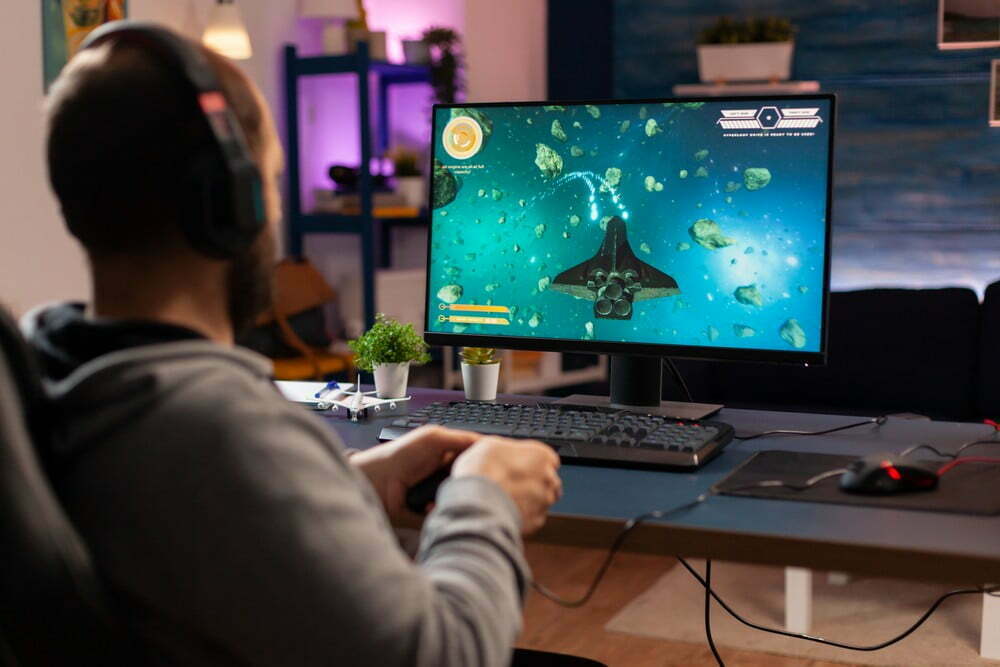
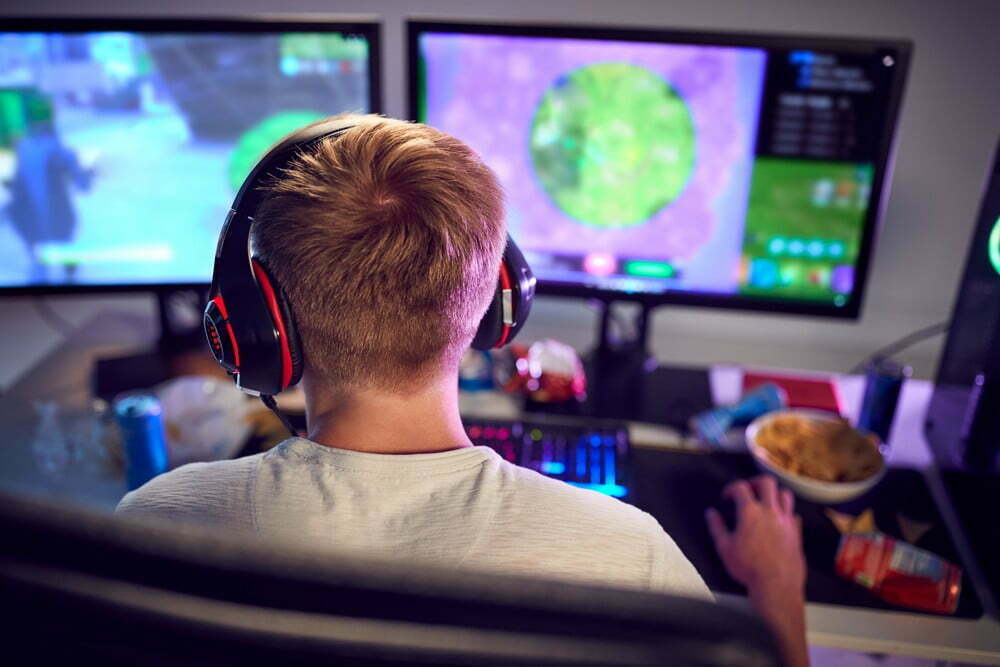

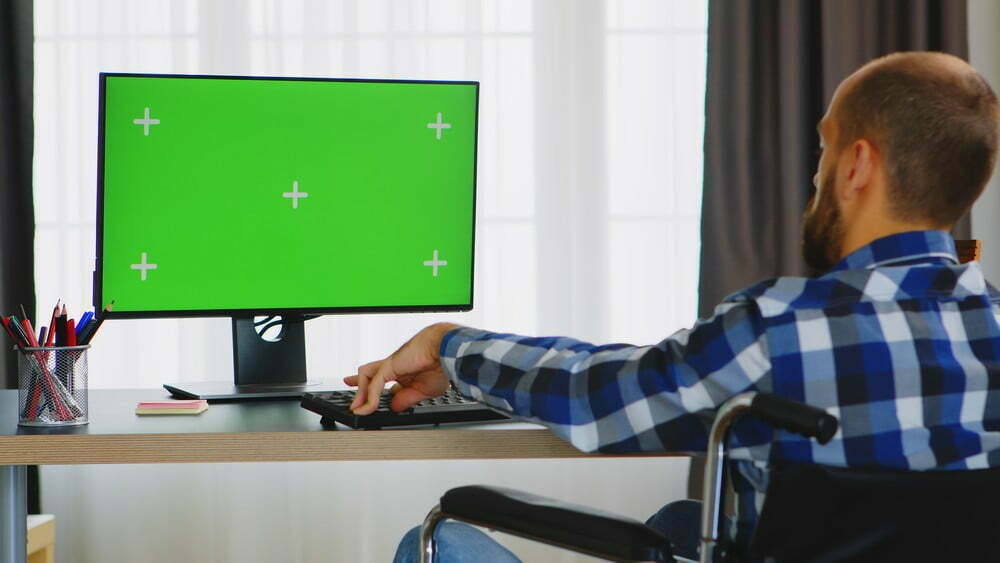

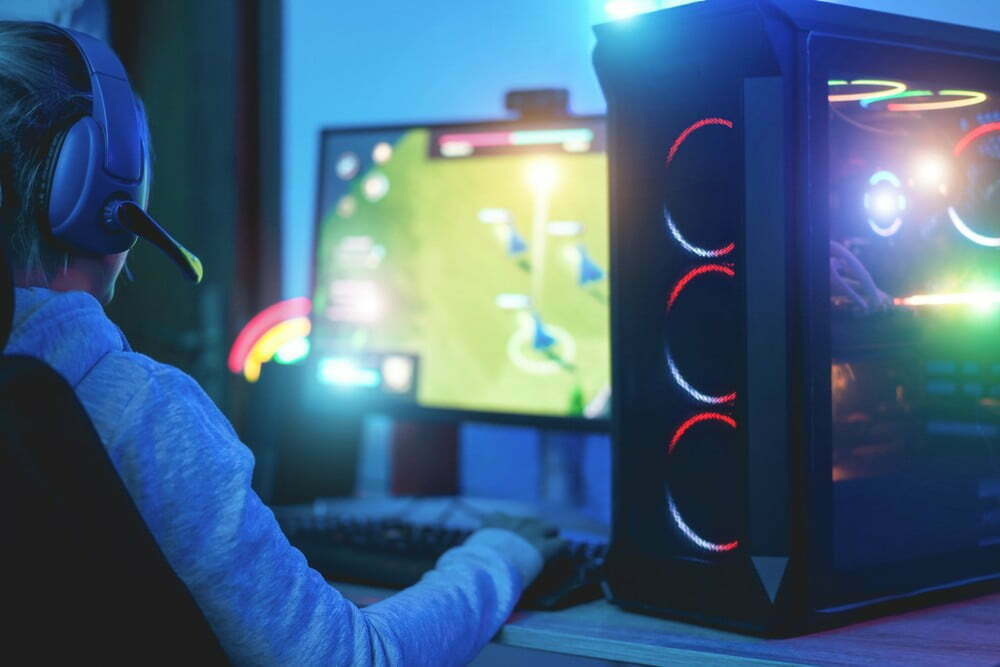
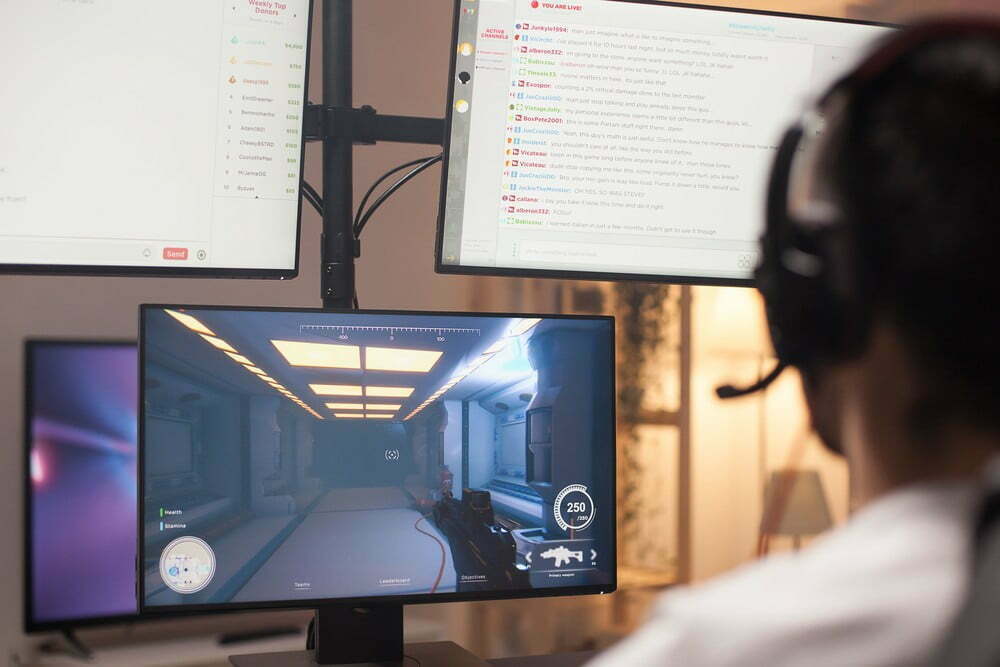
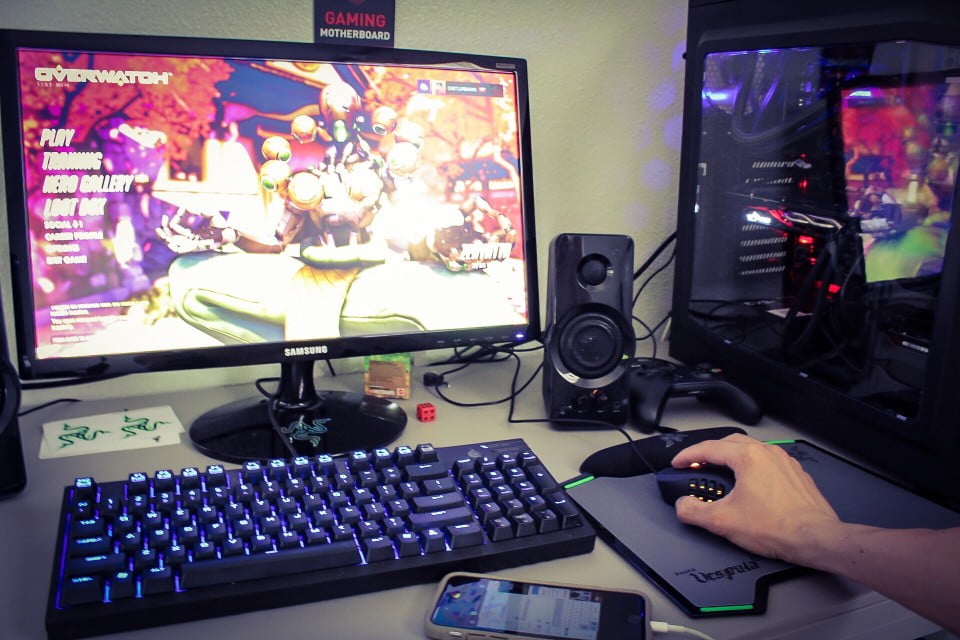

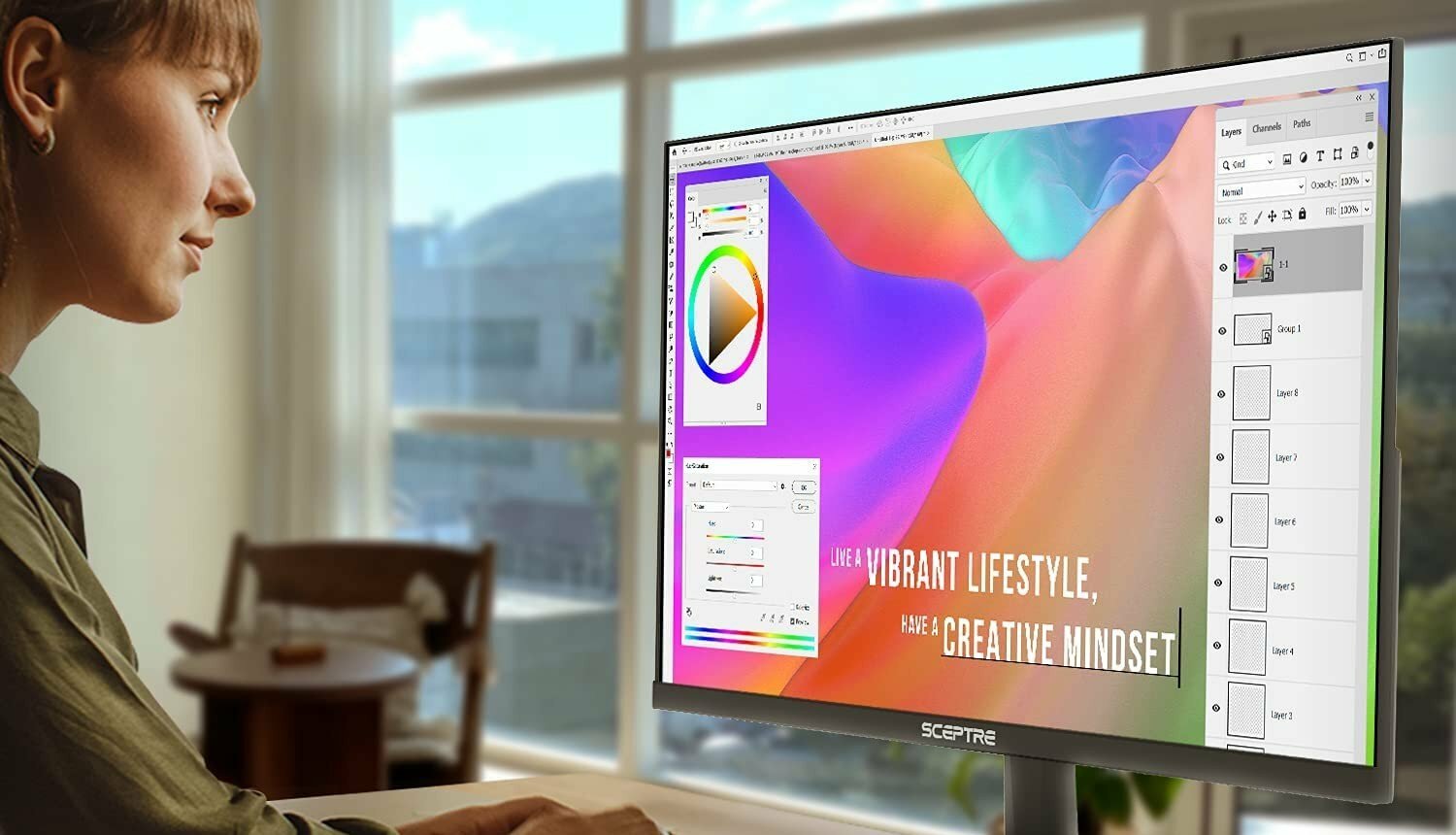

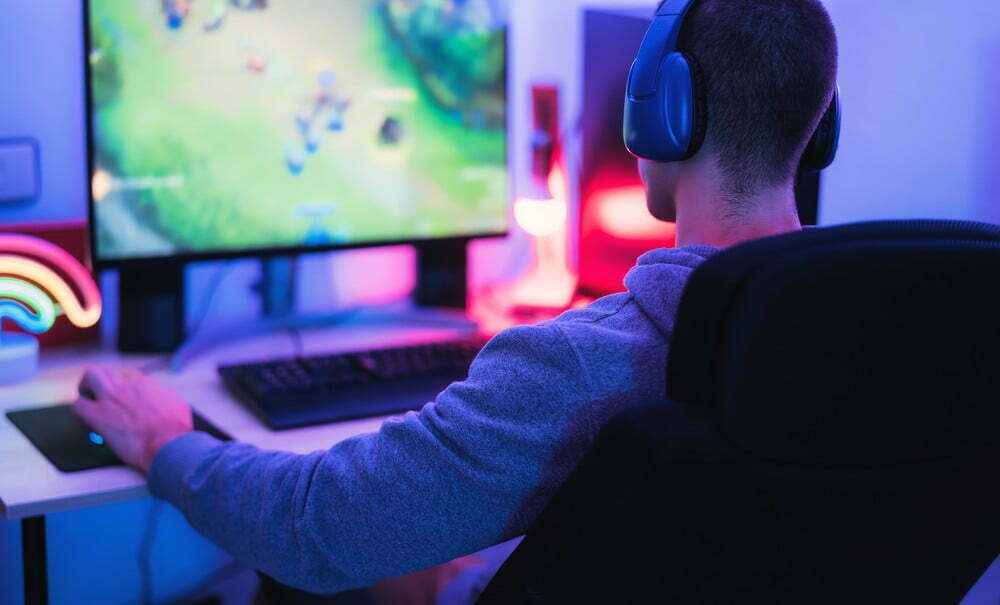
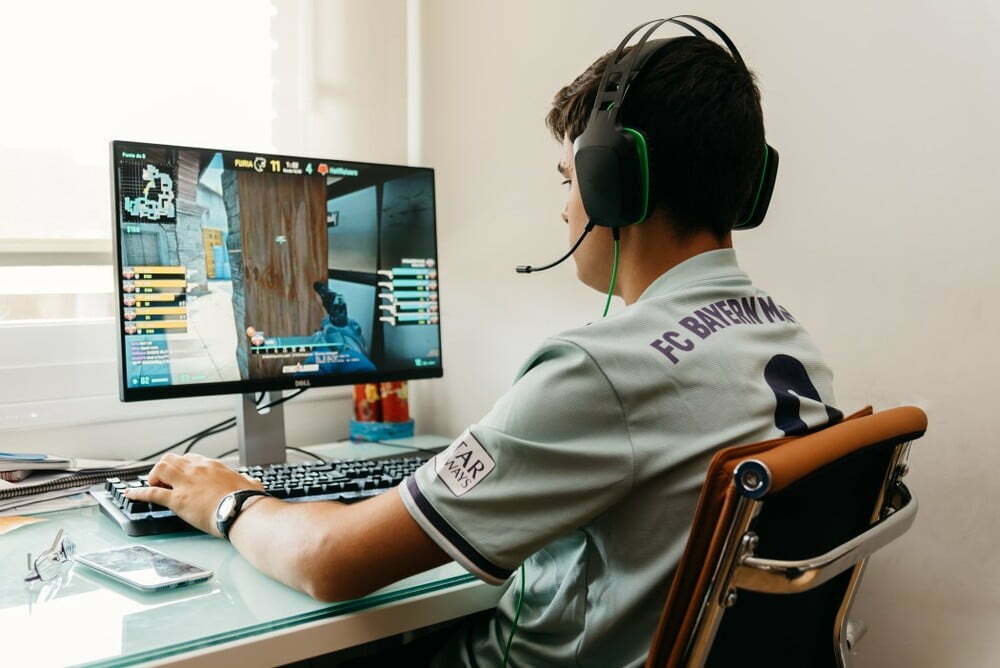
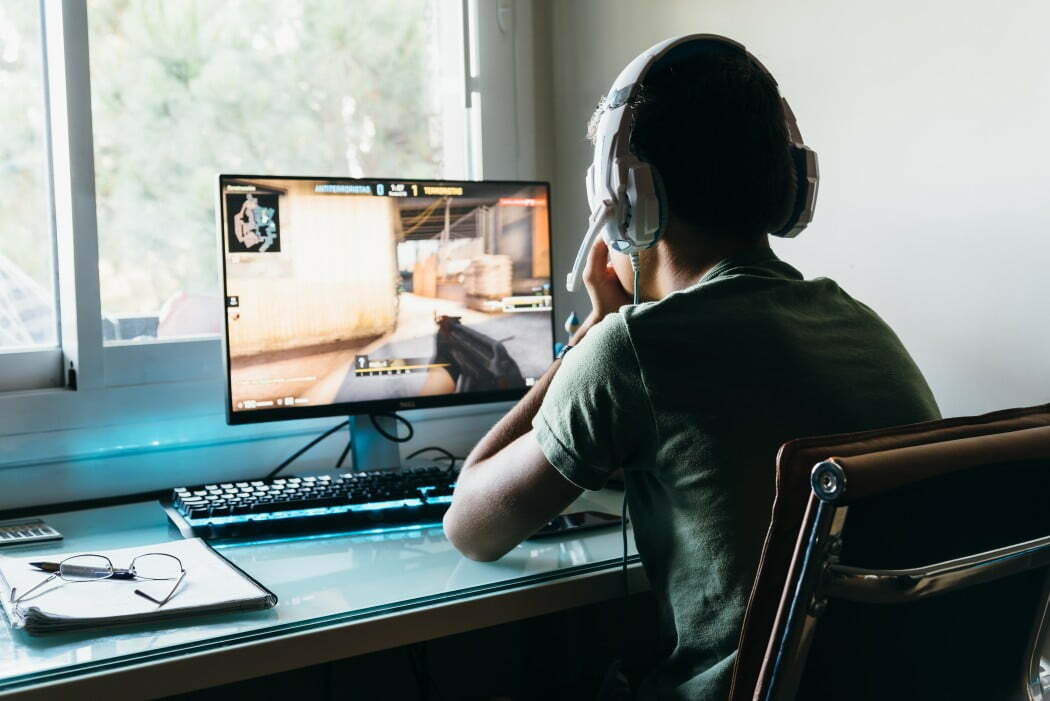
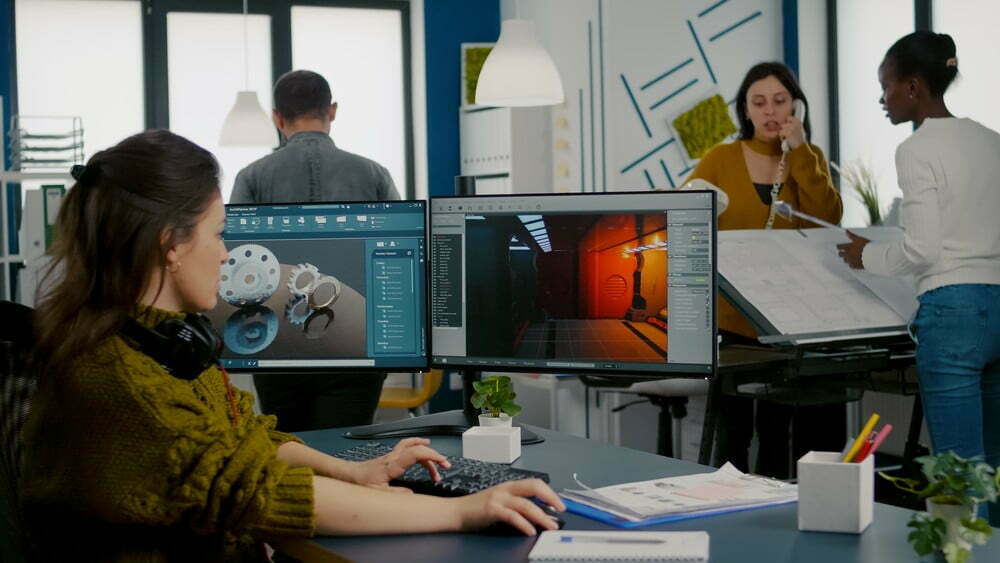
![Best 27 Inch Computer Monitor in [year] 31 Best 27 Inch Computer Monitor in 2026](https://www.gadgetreview.dev/wp-content/uploads/how-to-buy-the-best-computer-monitor.jpg)
![Best BenQ Monitors in [year] 32 Best BenQ Monitors in 2026](https://www.gadgetreview.dev/wp-content/uploads/best-benq-monitor-image.jpg)
![Best ASUS Monitors in [year] 33 Best ASUS Monitors in 2026](https://www.gadgetreview.dev/wp-content/uploads/best-asus-monitor-image.jpg)
![Best Dell Monitors in [year] 34 Best Dell Monitors in 2026](https://www.gadgetreview.dev/wp-content/uploads/best-dell-monitor-image.jpg)
![Best HP Monitors in [year] 35 Best HP Monitors in 2026](https://www.gadgetreview.dev/wp-content/uploads/best-hp-monitor-image.jpg)
![Best Lenovo Monitors in [year] 36 Best Lenovo Monitors in 2026](https://www.gadgetreview.dev/wp-content/uploads/best-lenovo-monitor-image.jpg)
![Best ViewSonic Monitors in [year] 37 Best ViewSonic Monitors in 2026](https://www.gadgetreview.dev/wp-content/uploads/best-viewsonic-monitor-image.jpg)
![Best Gigabyte Monitors in [year] 38 Best Gigabyte Monitors in 2026](https://www.gadgetreview.dev/wp-content/uploads/best-gigabyte-monitor-image.jpg)
![Best Monitors for PS4 Pro Gaming in [year] 39 Best Monitors for PS4 Pro Gaming in 2026](https://www.gadgetreview.dev/wp-content/uploads/best-monitors-for-ps4-pro-image.jpg)
![Best Monitor for Xbox Series X in [year] 40 Best Monitor for Xbox Series X in 2026](https://www.gadgetreview.dev/wp-content/uploads/best-monitor-for-xbox-series-x-image.jpg)
![Best Acer Monitors in [year] 41 Best Acer Monitors in 2026](https://www.gadgetreview.dev/wp-content/uploads/best-acer-monitor-image.jpg)
![Best MSI Monitors in [year] 42 Best MSI Monitors in 2026](https://www.gadgetreview.dev/wp-content/uploads/best-msi-monitor-image.jpg)
![Best SAMSUNG Monitors in [year] 43 Best SAMSUNG Monitors in 2026](https://www.gadgetreview.dev/wp-content/uploads/best-samsung-monitor-image.jpg)
![Best LG Monitors in [year] 44 Best LG Monitors in 2026](https://www.gadgetreview.dev/wp-content/uploads/best-lg-monitor-image.jpg)
![Best AOC Monitors in [year] 45 Best AOC Monitors in 2026](https://www.gadgetreview.dev/wp-content/uploads/best-aoc-monitor-image.jpg)
![Best Philips Monitors in [year] 46 Best Philips Monitors in 2026](https://www.gadgetreview.dev/wp-content/uploads/best-philips-monitors-image.jpg)
![Best Monitors For PUBG in [year] 47 Best Monitors For PUBG in 2026](https://www.gadgetreview.dev/wp-content/uploads/best-monitor-for-pubg-image.jpg)
![Best Stream Decks in [year] 48 Best Stream Decks in 2026](https://www.gadgetreview.dev/wp-content/uploads/best-stream-deck-image.jpg)
![Best Monitors for Streaming in [year] 49 Best Monitors for Streaming in 2026](https://www.gadgetreview.dev/wp-content/uploads/best-monitor-for-streaming-image.jpg)



















